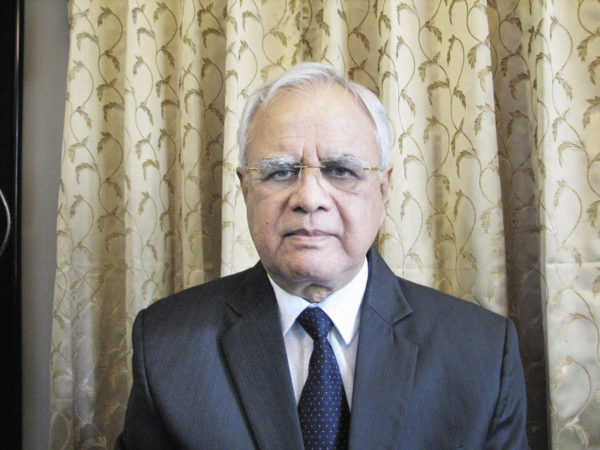
Photo: R.K. Sharma
The Indian government has set a target of achieving 100 GW of solar PV by 2022. Is the government doing enough to promote solar?
India is one of the leading countries experiencing robust growth of PV. Total solar capacity has already exceeded 35 GW, when there was less than 30 MW in 2010. This primarily consists of grid-connected ground-mounted plants, and rooftop solar accounting for approximately 10%.
Achieving the 100 GW by 2022 would be a gigantic task over the next three years. All stakeholders are working tirelessly towards achieving it, despite the setback caused by the coronavirus pandemic.
In India, solar projects have been awarded through a competitive bidding process followed by reverse auctions, except for the first few schemes which were awarded under generation based incentive (GBI). The process is well established and has yielded good results, achieving near grid parity much sooner than the target date.
In order to spur solar energy adoption, the government has announced new guidelines to encourage the installation of smaller solar installations and for solar water pumps in the agriculture sector. A major advantage of the scheme is that it provides additional income to farmers while reducing free or subsidized grid power for the electricity distribution companies of India (DISCOMs).
Rooftop solar has not grown as expected, as there is a clash of interests between DISCOMs and consumers. The government has announced new guidelines for a quick turnaround in the rooftop solar segment whereby DISCOMs will be the nodal agencies driving the installation of the rooftop solar energy program. These schemes are expected to yield good benefits in the future.
What are the challenges faced for deploying solar in India?
One of the major challenges is the non-existence of a domestic manufacturing base for critical components like polysilicon, which results in large-scale import of finished equipment. In devising the tax structure, the government needs to adopt a reasonable approach while balancing the various interests of stakeholders in the solar industry. Further, there is a need for periodic technical audits of the solar installations to ensure their optimal performance, and also a need for long-term rules governing taxes and duties.
Leading analysts predicted a bright outlook for solar installations in India. But 2020 has been dimmed by Covid-19. What are you seeing as the short-term market impacts from coronavirus?
Covid-19 has impacted every business and the solar industry is no exception. The timely actions taken by the Indian government have contained the epidemic to a great extent. Though it is bit early to reach any conclusion, the general opinion is that our country has handled the crisis in a much better manner than other countries.
Solar development will be impacted to a limited extent with respect to Covid-19. This will only be a temporary phase, lasting maybe two to three months. Thereafter, the sector will pick up very fast. The electricity utilities of the government sector are major stakeholders in solar energy development since they buy out energy generated. As the solar tariff is comparable to thermal tariffs and solar is the priority sector, these utilities are likely to continue to sign new power purchase agreements (PPAs) and support solar energy.
String versus central inverters – what is your take and what trends do you see in the inverter market?
The two types of inverters have specific uses. While the central inverters suit grid-connected, large-scale PV plants well, string inverters are the obvious choice for rooftop solar and other small solar installations. Studies show that the deployment of string inverters results in slightly better yields. At the same time, central inverters are cost-effective compared to string inverters.
The specifications of inverters and other products are in accordance with the client’s order for the project. The product should meet all the technical and operational requirements, up-time and product warranty, past performance, quality, and the response time for the services. We have used both central and string inverters for utility-scale solar projects. In India, large ground-mounted PV projects constitute a major portion of the total installations. So, the use of central inverters is overwhelmingly high compared to string inverters.
You have used TBEA inverters to set up a big ground-mounted solar power plant in the Ramanathapuram district of Tamil Nadu. What’s your sourcing criteria?
There are leading global inverter manufacturers who have a manufacturing presence in India and are ready to provide services within India. TBEA is among the leading inverter providers in the world that we have chosen to work with. We found TBEA inverters suitable on all accounts – including the client’s technical specifications, past performance, local and worldwide shipments, the performance of installed capacity, quality of manufacturing, and field quality. Finally, their prices are also competitive.
We have used TBEA central inverters with 2.5 MW of capacity each, suitable for outdoor installation, to set up a 110 MW grid-connected plant for a reputed client. So, the project uses 44 inverters.
What are the major features of TBEA inverters?
These inverters are equipped with state-of-the-art features. Some of the major ones are integration with the main control room and the SCADA, high efficiency at partial load and higher ambient temperatures, microprocessor-based MPPT control algorithms for optimal energy, suitability for outdoor installations, parallel operation of the two units of the inverters, an active anti-islanding detection, and isolation facility, and automatic ‘wake-up’ and ‘sleep mode’ features.
This content is protected by copyright and may not be reused. If you want to cooperate with us and would like to reuse some of our content, please contact: editors@pv-magazine.com.